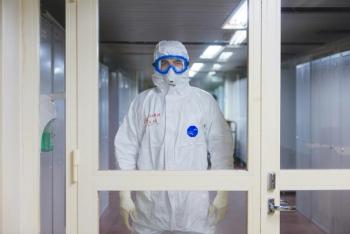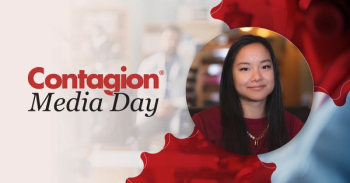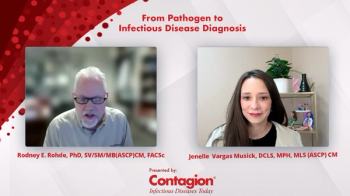
Herpes Zoster Complication in Vaccinated 19-Year-Old Linked to Corticosteroid Treatment
In a report detailing the hospitalization of a college student with complications from a herpes zoster infection, investigators say a corticosteroid prescription likely impaired the patient’s antiviral immune response.
Investigators from Emory University School of Medicine have detailed a rare case of herpes zoster, or
Chickenpox and shingles are both caused by VZV, which can remain dormant in the body after chickenpox infection and reactivate years later to appear as shingles. Although nearly 94% of children in kindergarten in the United States have received 2 doses of the
According to the new report, the young woman presented to her primary care provider after experiencing 2 days of left-sided chest and back pain. The patient had no history of previous hospitalizations or serious illnesses. After initially receiving azithromycin for treatment of suspected bacterial bronchopneumonia, muscle relaxants, and 3 days of the corticosteroid prednisone for chest and back pain, the chest pain continued. On the sixth day of symptoms the patient developed cutaneous wild-type herpes zoster lesions and was diagnosed with herpes zoster.
On the seventh day the patient became febrile and developed cutaneous disseminated herpes zoster and was admitted for monitoring and treatment. After developing encephalopathy, tachypnea, and respiratory distress, the patient was admitted to the pediatric intensive care unit on day 13 and remained in the hospital for more than a month.
The investigators found that although the patient received her first dose of the varicella vaccine Varivax at age 1, she did not receive her second dose until age 13. For routine 2-dose varicella vaccination, the
In an interview with Contagion®, study author Christiane Eberhardt, MD, notes that such cases of disseminated HZ in young immunocompetent individuals are extremely rare. “The rarity of our case was the dissemination and severity of disease in a previously healthy and immunocompetent young adult. However, she had received initially a short course of corticosteroids treatment that probably impaired her antiviral immune response allowing for the virus to spread,” Dr. Eberhardt said. “Once the corticosteroids were stopped, the patient elicited an exceptionally strong immune response, probably because the viral load was very high. Given our patient’s severe complications, it is important to cautiously weigh the risk and benefit before starting a corticosteroids treatment, even if it’s only for a short course.”
The case, according to the investigators, should raise awareness among clinicians for the potential of herpes zoster in vaccinated young adults, particularly since initial herpes zoster presentation can be mistaken for another infection.
“In general, it has been shown that the risk of shingles in chickenpox-vaccinated children is an order of magnitude lower than in unvaccinated children,” Dr. Eberhardt said, citing previous research showing that the incidence in vaccinated children was around 80% lower than in unvaccinated children and that half of the shingles cases in vaccinated children were due to wild-type VZV. “Increasing coverage of chicken pox-vaccination in children should probably be the primary focus to decrease exposure to wild-type virus before thinking about adding another vaccine to the schedule. Also, we need to keep in mind that this is only one single and very rare case that we report and that we cannot draw conclusions for a whole population.”
Newsletter
Stay ahead of emerging infectious disease threats with expert insights and breaking research. Subscribe now to get updates delivered straight to your inbox.























































































































































































































































































































